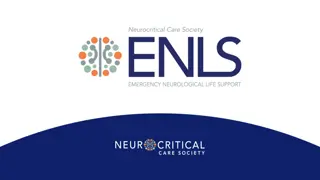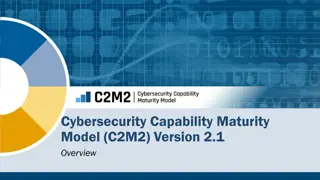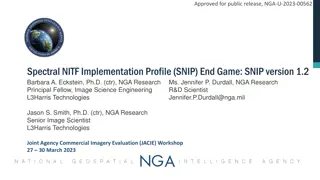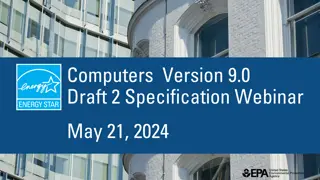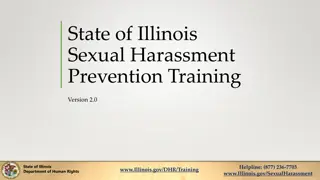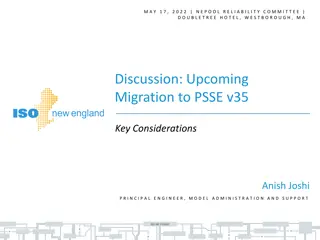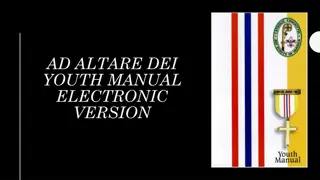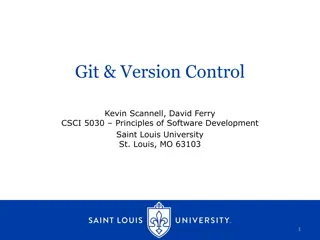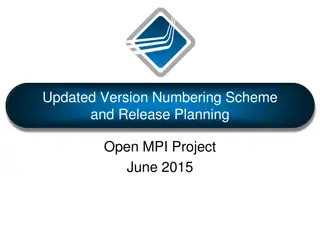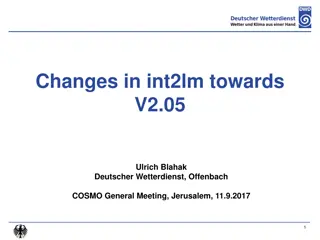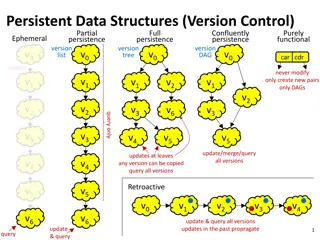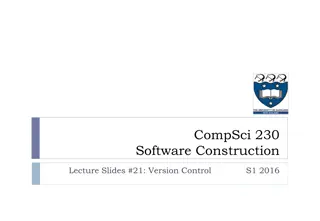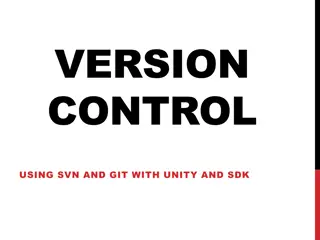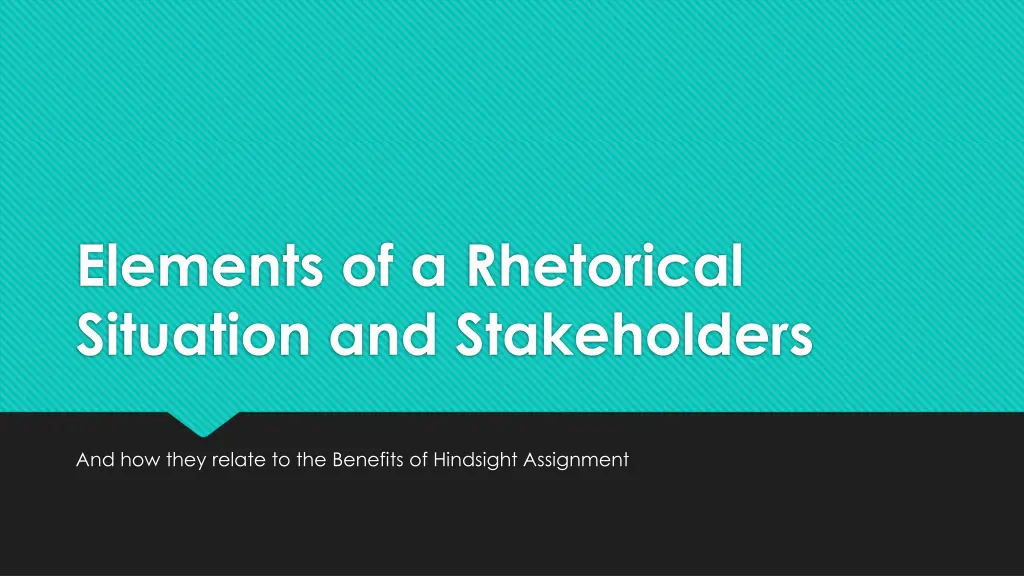
Understanding Rhetorical Situations & Stakeholders for Hindsight Assignment
Learn about the elements of a rhetorical situation, stakeholders, and how they relate to the benefits of hindsight assignment. Explore the concepts of exigence, audience, constraints, and stakeholders in this informative content.
Download Presentation

Please find below an Image/Link to download the presentation.
The content on the website is provided AS IS for your information and personal use only. It may not be sold, licensed, or shared on other websites without obtaining consent from the author. If you encounter any issues during the download, it is possible that the publisher has removed the file from their server.
You are allowed to download the files provided on this website for personal or commercial use, subject to the condition that they are used lawfully. All files are the property of their respective owners.
The content on the website is provided AS IS for your information and personal use only. It may not be sold, licensed, or shared on other websites without obtaining consent from the author.
E N D
Presentation Transcript
Elements of a Rhetorical Situation and Stakeholders And how they relate to the Benefits of Hindsight Assignment
This situation may be defined as a combination of certain people, events, objects, and even relationships that seem to be related to some problem that can be potentially solved by someone persuading the right people to change the problem (TB 26) Rhetorical Situation The circumstances that cause someone (the rhetorician) to need to speak out about some issue or problem (TB 26)
Elements of a Rhetorical Situation Exigence Audience Constraints
A rhetorical situation comes into existence when we perceive the need for a problem to be solved Exigence Exigence describes what causes such a need (TB 27)
Those who receive the message from the rhetor General Public Audience: various individuals from all walks of life (TB 31) Audience Target Audience: individuals the rhetor intends to persuade and desires to speak with (TB 31)
Any external factors, aside from the rhetor and audience, which could impact a message s success (TB 37) Constraints Often constraints refer to the parameters of composition and the context the audience will receive it in (TB 37)
Since many arguments are more complicated than a black-and-white debate, we use the term stakeholders to identify many people and groups invested in or affected by the problem being discussed (TB 159) Stakeholders
Putting it into Practice After we discuss what we think are the rhetorical situation and stakeholders, we will look at an article about what actually happened This process will be similar to how you might select and begin exploring your own event or issue
What might be the exigence that started this consideration? UK Hospital is considering becoming a smoke free campus Smoking is harmful to health Who is the audience both general and target of a communication about this issue? General: the public Target: Those who visit/work at/are patients at the hospital What are some constraints of this communication? What is the rhetorical situation if you were going to write a newspaper article about this issue? Limits of newspaper (length, print restrictions, etc.) When will audience read the article (mood, previous knowledge)
Those employed by the hospital Who might be some stakeholders? Doctors Nurses Technicians Cleaning staff And more Patients at the hospital Visitors at the hospital The issue: UK Hospital is considering becoming a smoke free campus Those who pass by the hospital Those who are concerned with where people can smoke more generally Those who are concerned with the reputation of the hospital
You can begin by asking how the event or issue started (exigence) Once you have selected an issue or event Application to Benefits of Hindsight You can ask who might want to know about this issue, or who could be persuaded (audience) You can ask what kind of challenges there are to this communication (constraints) These questions can help you begin your research, but you should also be thinking about the how s and why s behind these You can ask who might be affected by or would be invested in this issue (stakeholders) answers
As you read ask yourself how the rhetorical situation is presented, were your predictions correct? Let s look at an article and see what actually happened Consider who is identified as a stakeholder, do they have the opinions you would expect? Is there anyone else you think that should have been included? Think about the genre conventions of the article, how do they contribute to learning about the issue? For your own article, what is there in this article that you would also like (or not like) to do?
Yarmy, Dick. Recent Ban Pushes Smokers Off Local Hospital Grounds. The Kentucky Kernel, 4, Dec. 2008, https://exploreuk.uky.edu/catalog/xt7v6w96b54c#page/2/mode/1up
Yarmy, Dick. Recent Ban Pushes Smokers Off Local Hospital Grounds. The Kentucky Kernel, 4, Dec. 2008, https://exploreuk.uky.edu/catalog/xt7 v6w96b54c#page/2/mode/1up

